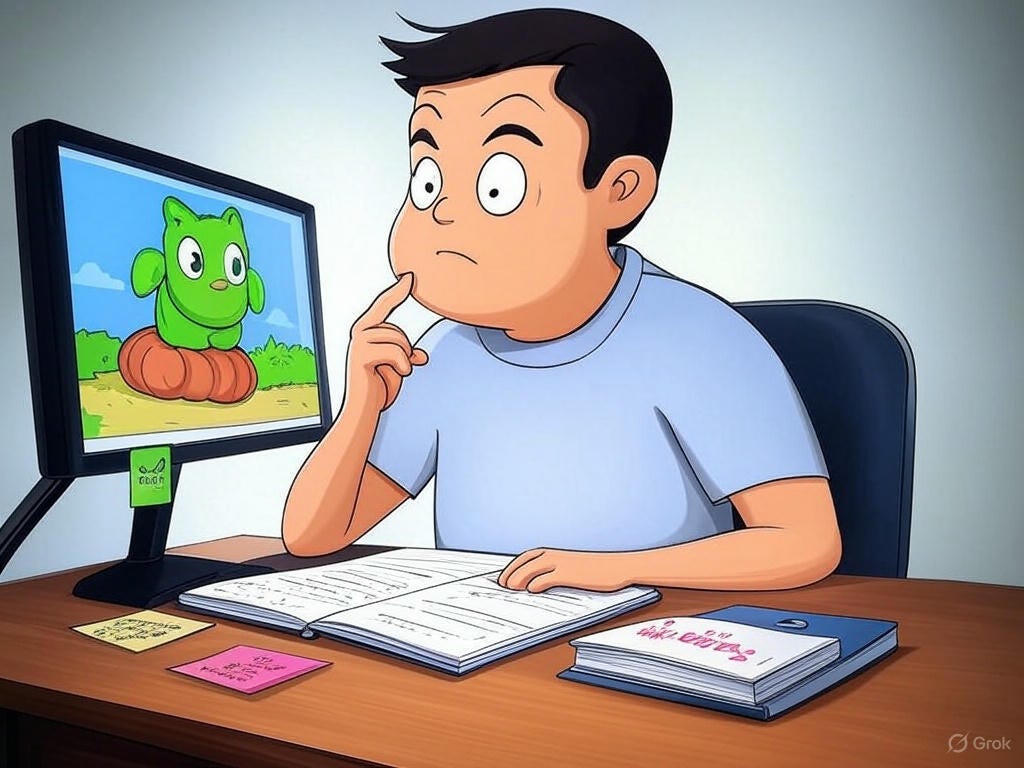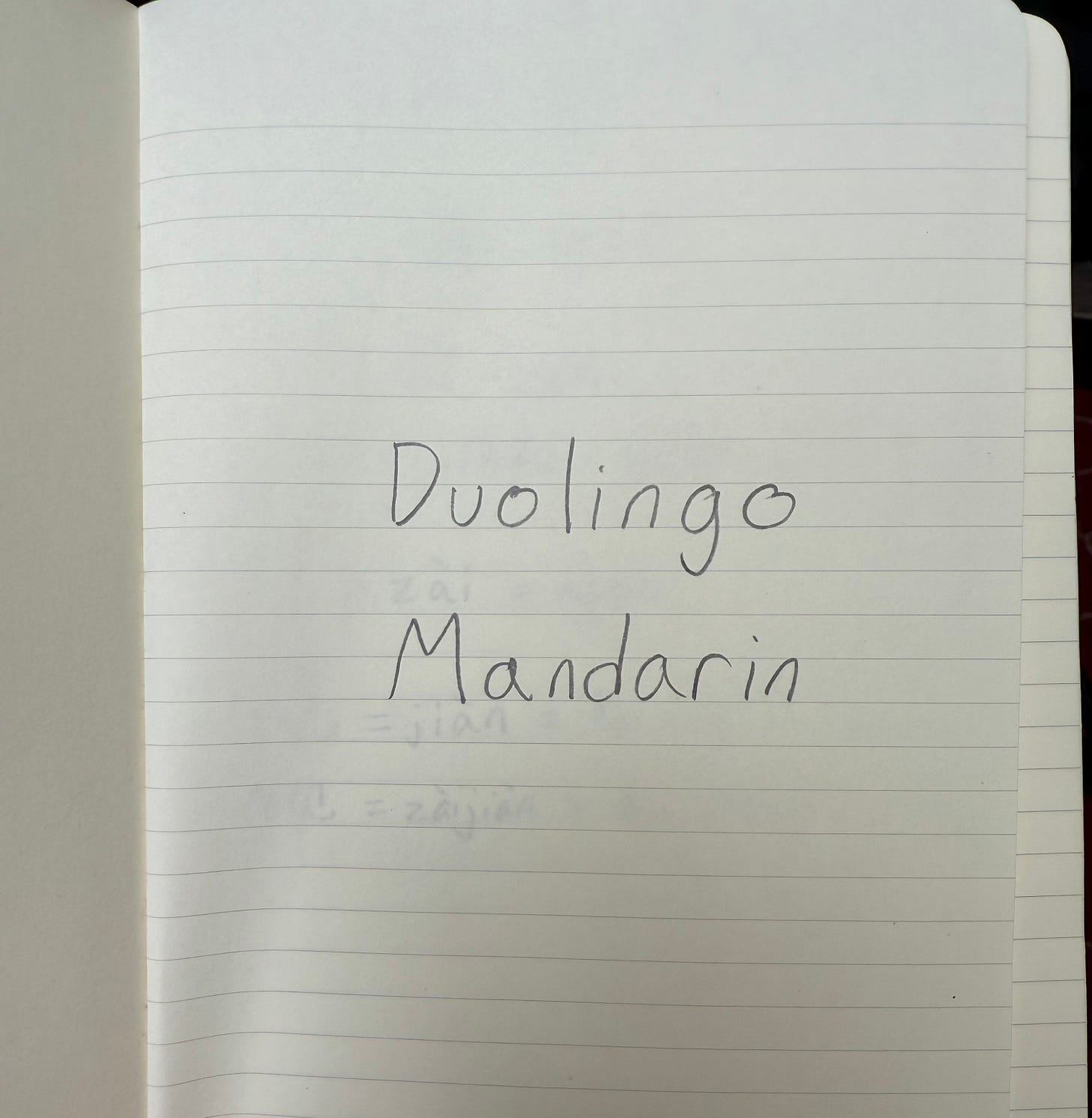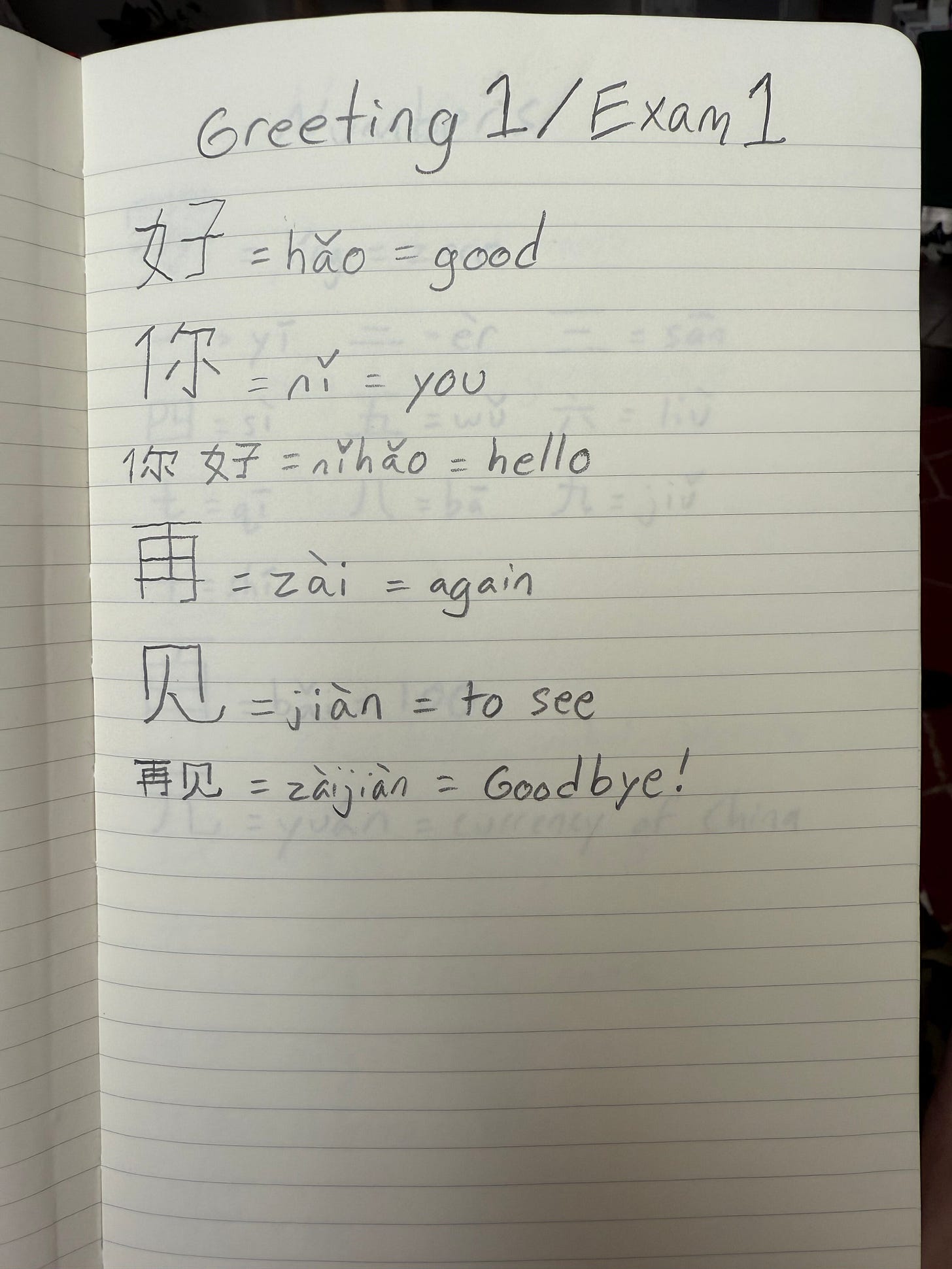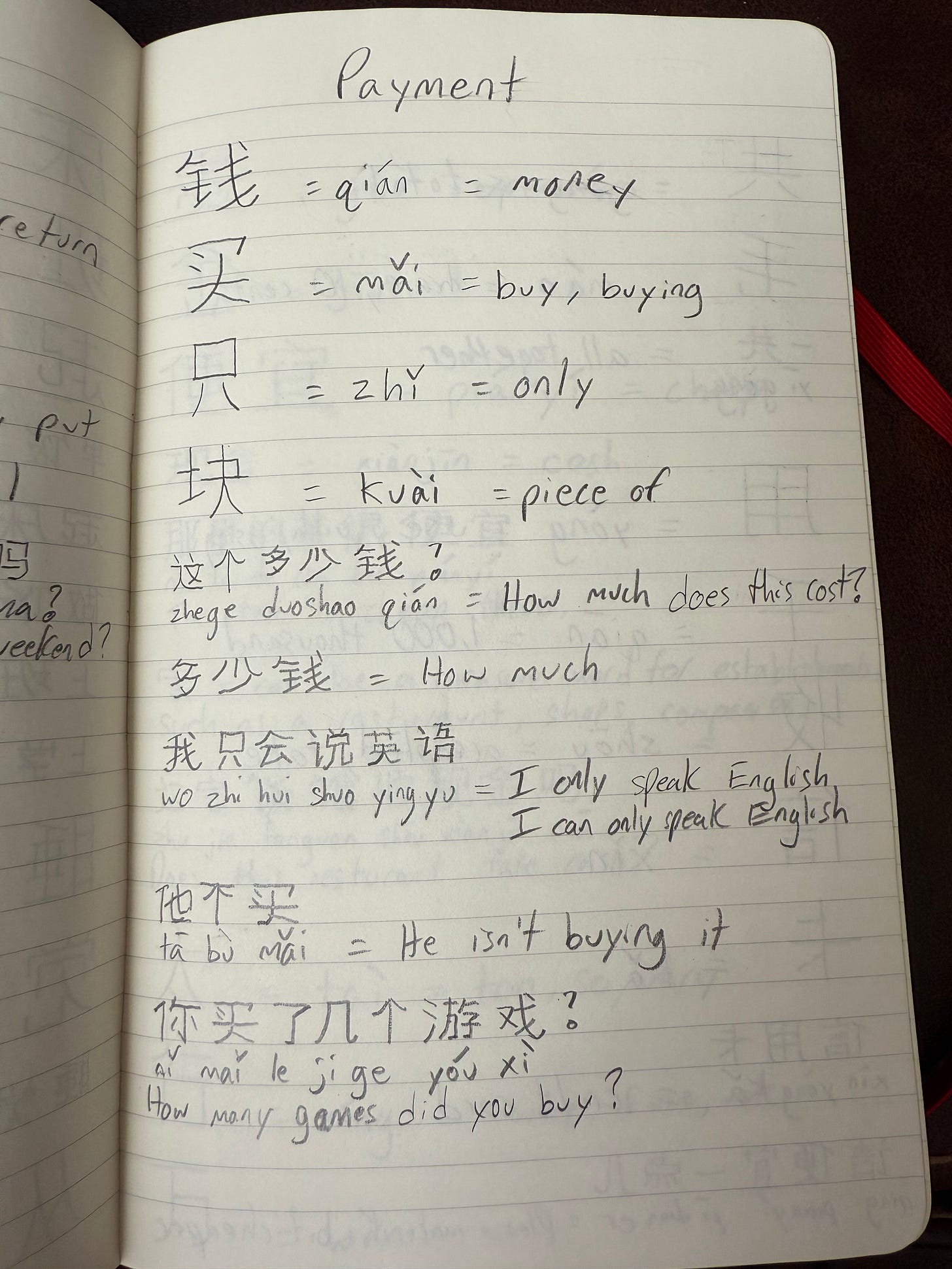Can You Find the Tao in an App?
Probably not, but I taught myself Chinese with Duolingo.
When I started exploring Tao and investigating its mysteries, I knew studying an English translation could only take me so far. If I wanted to learn the truth, I needed to study the Tao Te Ching in its mostly original language, Mandarin. I say mostly original because ancient Chinese is just as different from modern Chinese as ancient old English is to modern English. Since I didn’t want to go back to college to earn a PhD in ancient China, I figured the modern version would work. But where to begin?
Like many, I turned to Duolingo—the green owl that haunts your notifications. If you’ve never seen Duo the Owl memes, you should Google it. Another option was to learn only the Tao Te Ching, but I’m a curious man and wanted to learn more about Chinese culture and history, too. So, I paid for a monthly subscription and began my language journey.
I quickly learned that Duolingo isn’t a perfect teacher. Features like notes and flashcards were missing, and learning vocabulary words was also surprisingly difficult. Duolingo wants you to learn by doing, which is great for becoming conversational but not great for deep memorization. I knew if I wanted to have a chance to learn anything, I needed to write and record my lessons.
To the app's credit, it’s great at gamification. In other words, the app makes learning a game and addictive. Learning for multiple days causes you to earn a streak, which can be shared with others. The longest streaks are even shared as a push notification with every user across the entire ecosystem— a kind of global winner. Like Substack, leaderboards and leagues are front and center, always driving you to challenge yourself and compete with other learners.
To be honest, I loved it! I dove deep and memorized as much as I could each day. Within a few weeks, I could speak sentences on a few specific topics and worked hard on my tone. I watched Chinese language videos and live broadcasts to hear natural speakers and match their rhythm and pronunciation. I even labeled objects around my office with sticky notes to keep the word and symbol in my head.
If I looked to the left, I saw a sticky note that said “向左.” If I looked to the right, I saw a note that said, “向右.” I even had a note on the back of my chair, “椅子” and my laptop, “电脑.” My colleagues thought I was a little weird. They would ask, “When are you going to use any of this?” And I would say, “I study Chinese philosophy to understand my life and the universe better.” Puzzled eyes followed.
Since Mandarin doesn’t use the Latin alphabet, I can’t simply sound out a symbol. For example, do you know how to produce 道德经? Can you ‘sound it out’ like when you were a kid? Nope. Reading it slowly also doesn’t help when you don’t know the radicals. But, with my notes, I built my own system.
I wrote new words in large text with their pinyin pronunciations and definitions. Pinyin is the Romanization of Mandarin that the Chinese government supports. Take the sound a Chinese word creates and ‘sound it out’ with the Western alphabet, that is, Pinyin. Duolingo uses the same method, but the goal is to memorize and learn the Chinese character, not how it is written in Pinyin. I wrote new phrases or example statements below those so I could see context and structure. The first line was always the Mandarin. Then, I’d write the Pinyin followed by the English translation.
Usually, because Duolingo doesn’t do a great job with vocabulary, I found a Chinese dictionary app I used for single words. It helped me draw them neatly and provide the different definitions. Much like English, Mandarin most Mandarin words have many meanings. But unlike English, the meaning changes with the tone of your voice. In other words, if you raise the pitch of your voice while speaking, the meaning of the word can change dramatically. It’s fascinating to learn!
After a while, I noticed everything I learned wasn’t in the Tao Te Ching. Of course, it wasn’t. Duolingo has no interest in teaching ancient philosophy or religion. I checked the course recently, and the closest you might get is learning the word for temple or church. But will it teach me the underlying principle of existence? No. I thought I was learning enough to at least walk through Tao Te Ching and understand a few words. But after seven months, I couldn’t read even a few lines. I recognized words like 我, which means ‘I/me’, and 你的, which means ‘your,’ but I burned out without a person to speak with or enjoy learning with.
However, a few years later, when Red Note, the Chinese social media app, skyrocketed in popularity during the TikTok ban, I could recognize some words in posts. Seven months of work—five words committed to long-term memory. Score!
I thought once I finished the entire course, I’d publish the journal online and let others learn from my notes—like a kind of walkthrough for Duolingo. Unfortunately, the course is much longer than it used to be, so my notes mean even less than they did. However, I occasionally pull the notebook from my shelf and take a trip down memory lane.
I appreciate the time I spent and how it opened my eyes to a new language. Chinese sentence structure was easier than I thought, but learning how to write again was difficult, and I never knew if my pronunciation was correct. I’ve thought about restarting the course several times now that I have a good guidebook. I may have the app erase my progress and start over someday. Perhaps once I feel comfortable in my writing journey again, I’ll make another attempt. Chinese influence in Western culture has never been higher, and plenty of social media apps exist to practice. One step at a time, though.
First, reconnect with Tao. Second, write every day. Third, well… we will see how it goes.
I don’t paywall my articles on Substack because I believe the wisdom of the Tao shouldn’t be kept from anyone. But if you like what I write and want to help support me financially, please upgrade to a paid subscription.
A big thank you to my first two paid subscribers, Tracy and Debra!
Want to subscribe?









This was a really nice read, I think your use of Pinyin as a bridge between the Chinese characters and the western alphabet was very smart.
Have you tried any of the language exchange platforms where you can talk to people all over the world in their native language?